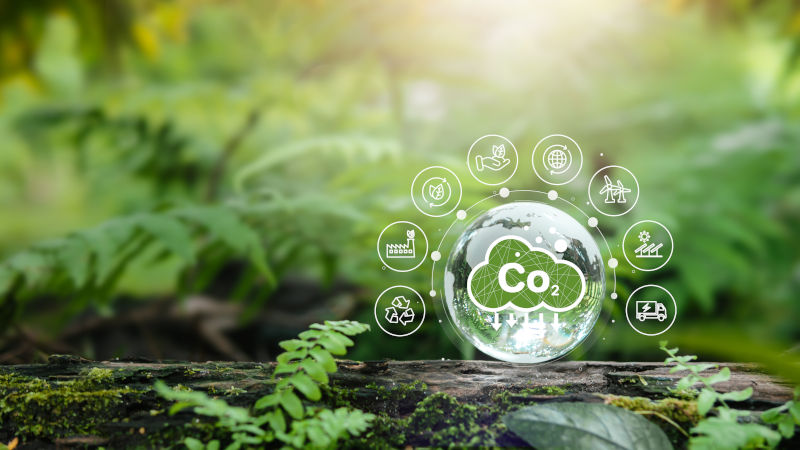Environment: Not much environmental cheer in the season of goodwill
December 16, 2023
Exmouth Gulf threatened with industrial development. Africa being forgotten as global economies develop. Australias emissions reductions likely to stall long before we get to net zero. Read on for the weekly environment update.
Living in our environmental bubble
Florence Miller is the Director of the UK-based Environmental Funders Network, the aim of which is to increase the level and effectiveness of philanthropic support to environmental causes. In the Networks most recent newsletter, Florence told this rather dispiriting story:
I went back to my secondary school last week to try to make the case that environmental issues were something the current students might devote their working lives to in one way or another, at a careers event. (When I told them what year Id left the school, they gasped aloud this was not the highlight of the evening.) Apart from trying to tease apart why, or whether, the geography teacher had told them that we were entering a new ice age (Did he meantoday, or in thousands of years? Blank looks), we spent quite a lot of time talking about climate activism at their request. Theyd all seen a series of TikTok videos disparaging it, and I was curious to know their thoughts. Well, spoiler alert teenagers are impressionable. They had taken as read everything theyd seen and heard in the videos. (One was appalled that Just Stop Oil activists had had a meeting in a really fancy building with a fancy ceiling I watched the video later; it was a church!) So we discussed the suffragettes, and how they were pretty universally loathed for their actions, but they werent trying to be liked, and now women have the vote, and we discussed the concept of the Overton window, and how people who are worried about climate change are divided over whether these tactics help or hinder the cause, and they actually perked up one even put down her phone and said the conversation was interesting. Theres no moral to this tale, I was just struck (again) by how little these conversations seem to be happening outside the environmental bubble, and wonder how we can constantly have more of them.
At the other end of the spectrum, twelve year-old Licypriya Kangujam from India made a calm but determined interruption to a high level plenary session at the COP meeting on Monday. Her message was simple: End fossil fuels. Act now. She was removed, held for 30 minutes and banned from the conference, which makes the following comment in the UNFCCCs media statement at the COPs conclusion somewhat perplexing:
My final message is to ordinary people everywhere raising their voices for change, [UN Climate Change Executive Secretary] Stiell added. Every one of you is making a real difference. In the crucial coming years your voices and determination will be more important than ever. I urge you never to relent. We are still in this race. We will be with you every single step of the way. It looked like every step of the way out for Licypriya.
Tim Winton defends Exmouth Gulf
Tim Winton is one of our living treasures, an author with a truly international reputation. Less well known is his long-standing commitment to protecting the marine environment.
In The Big Issue, Tim describes the beauty and wildlife of Exmouth Gulf in Western Australia and explains why this environmental wonderland, where the oceanic deep suddenly meets the desert, was not included when the adjacent Ningaloo Reef was declared a World Heritage Area in 2011. He goes on to outline and criticise the industrial developments currently proposed for Exmouth Gulf.
Lets get real though Tim, surely youre not suggesting that humpback whales, dugongs, dolphins, tiger sharks, marlins, manta rays, turtles and sawfish should get priority over dredging the seabed to build a 900m wharf, an industrial deep-water shipping facility and a potash operation.
Or, and I think that this is a cracker of an idea how come no one thought of it before? a saltworks producing 4.7 million tonnes of salt each year. Who wants natural wetlands teeming with wildlife (that incidentally support sustainable tourism) when you could have massive artificial salt ponds bounded by kilometres of levee walls, heavy machinery, salt mountains and lots of toxic hypersaline water to get rid of?
The World in 2050
A few weeks ago, I wrote about ExxonMobils projections for what the world will look like in 2050. Below are a few additional graphs for the 2050-world of 10 billion inhabitants and global warming exceeding 2oC.
In just the 15 years between 2015 and 2030, the global middle class will almost double, mostly in Asia.
The rich countries (or rather the richer people in the rich countries) will continue to increase their standard of living, hotly pursued by people in China. People elsewhere will be a bit better off than today except for one glaring exception - Africa.
Energy consumption per person in 2050 will be a game of three halves: the rich countries still consuming the most but a little less than today; people in China, India and Latin America increasing their energy use but only the Chinese getting close to the OECD average; and people in Africa having marginally lower consumption per person than today.
Africas total demand for energy will increase between now and 2050 but its 65% projected population growth explains the fall in energy consumption per person. Just for reference, 100 Quadrillion Btu is roughly equivalent to the USAs current energy demand and global energy demand today is about 550 Quadrillion Btu.
The bottom line is that, depending on how you look at it, the USA has reason to be worried about the challenge posed by Chinas technological and economic growth or, and the way Id prefer to regard it, China is leading the charge to increase the equity between developing countries and the rich Global North. Its concerning, however, that no one seems to care much about people in Africa.
Australias Emissions 2004-2023
Australias latest quarterly greenhouse gas emissions report shows that emissions have decreased 21% since September 2004 and 27% since they peaked in 2007. Progress has stalled over the last two years though.
Trends for CO2 (two-thirds of total GHG emissions) and methane (CH4 a quarter of emissions) have been steadily downwards since 2004, while nitrous oxide (N2O) emissions (4% of the total) have remained fairly constant.
Other GHGs include a smorgasbord of fluorocarbons (used in refrigerants and air conditioners) which are hundreds and thousands of times more potent greenhouse gases than CO2. Sulphur hexafluoride, another Other, is the daddy of them all with 23,000 times the warming potential of CO2. Emissions in the Other category have doubled over the last 20 years.
Across the economy, since 2005 only the land use, land use change and forestry sector (LULUCF) stands out as having reduced its emissions dramatically (for reasons we wont go into here). All the other sectors have increased their emissions or decreased them by less than 25% (just over 1% per year on average).
The current federal government is keen to give the impression that it has set Australia on a path to a 43% reduction of the 2005 level of emissions by 2030 and net zero by 2050. Extrapolating the reduction in our total GHG emissions over the last few years, Climate Change and Energy Minister Chris Bowen regards the target as within striking distance. However, John Quiggin does not share the Ministers confidence.
Quiggin points out that nearly all of the emissions reduction has occurred in two sectors electricity generation and LULUCF. The transition to renewable energy will be almost complete by 2035, after which the downward trend in energy emissions will stop. The LULUCF emissions reached bedrock around 2015 and no further improvements are expected there.
Quiggin suggests that the sectors with the largest remaining emissions transport, heating for industry, fugitive emissions from coal and gas production, and agriculture - are unlikely to decrease much. Consequently, on current policy settings we are unlikely to get below even 50% of the 2005 level by 2050.
Accelerated electrification of society is one of the measures the Minister might want to consider to tackle the problem. For instance, more and more local councils are banning gas connections to new homes and businesses but the federal government has dismissed the idea.
More electricity + less gas = less climate change, lower bills, better health
Worried about an alleged looming shortage of gas, governments in our southern states are considering building facilities to import liquified natural gas (yes, exactly the same stuff that Australia itself exports!!), upgrading pipelines to deliver more gas from the northern states, and developing new gas fields.
Why go to all this trouble, one might well ask, when it would be more effective, cheaper, better for the climate and healthier for people if governments used the money (our money) to electrify, electrify, electrify. As very clearly demonstrated in the graph below, ending the sale of household gas appliances and switching to industrial heat pumps would reduce the demand for gas between 2020 and 2045 by over 50%. Adding further domestic electrification and measures to promote energy efficiency would reduce demand by almost 80%. Eliminating gas from homes would also have enormous health benefits.
Once again, one is left wondering what is going on behind the curtain. Why does the gas flame continue to burn so brightly when its costly, causes climate change, pollutes the air we breathe and damages our health?
Coal out, batteries in
With the countries at the COP meeting in Dubai explicitly acknowledging for the first time the need to reduce fossil fuel production and consumption (its only taken them 30 years) and agreeing to triple the roll out of renewables by 2030, the following graphs may provide some encouragement that changes can be made.
The ten countries that have managed the quickest reduction in coal power:
Lithium-ion batteries hit lowest price ever:









